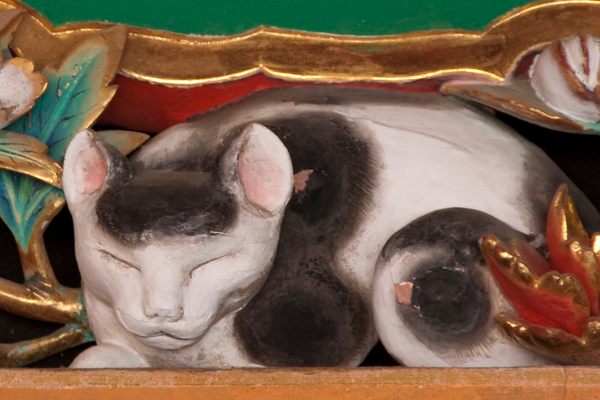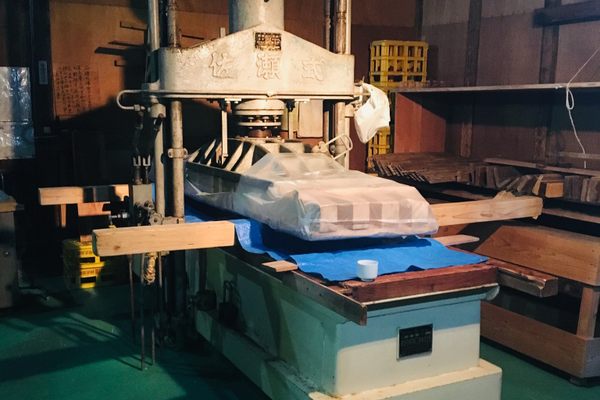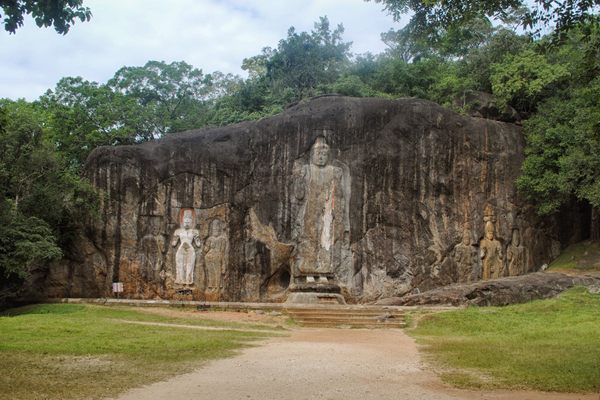Kanmangafuchi Abyss
A remarkable lava formation encloses a line of Buddhist statues that can't be accurately counted, according to local mythology.
In the wooded area of Japan’s Kanmangafuchi abyss stands a row of stone Jizō statues. How many? Nobody knows for sure, because apparently each time you count them, you end up with a different number because they routinely disappear.
Jizō is one of Japan’s most beloved deities and is regarded as the Bodhisattva who cares for travelers and lost souls and is also the guardian of children. Jizō statues are decorated with red cloth bibs and crocheted caps. This particular group of statues, situated near the city of Nikkō, is called Narabi Jizō (which translates to “Jizō in a line”). There are roughly 70 of them, lined up in front of a wall stretching around 320 feet and overlooking the Daiyagawa River. Due to their apparently ghostly nature and disappearing tricks, they are also called Bake Jizō, or “ghost Jizō.”
The decorated statues are ensconced in the Kanmangafuchi abyss, which was formed around 7,000 years ago when lava flows from an eruption of the nearby Mount Nantai combined with the water of the river. The resulting landscape is extraordinary and the abyss offers a pleasant trail to walk along.
Know Before You Go
About 40 minutes by walk from Nikkō Station. The whole hiking trail is about 2 hours and a half long.
Asian black bears and bloodsucking land leeches sometimes appear in the walking trail so be wary of them if you decide to hike beyond the Narabi Jizō.



































Follow us on Twitter to get the latest on the world's hidden wonders.
Like us on Facebook to get the latest on the world's hidden wonders.
Follow us on Twitter Like us on Facebook